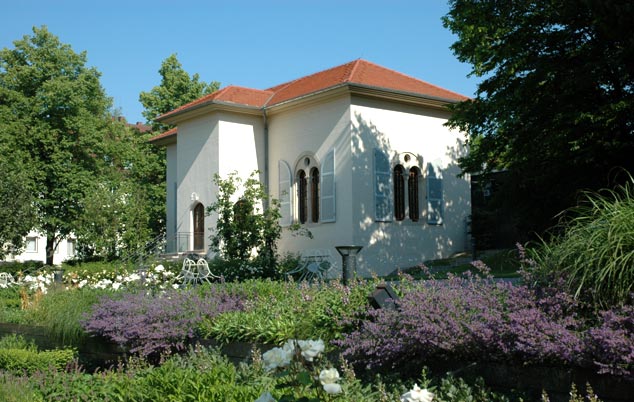
The patrician Hirsvogel family
In the early sixteenth century, the Hirsvogels were one of Nuremberg's richest patrician families. First documented in Nuremberg in 1380, they are thought to have originated in Northern Italy. The family name ("millet bird" or "ortolan") is a Germanization of the Italian "Ortolano."
The family quickly built up an important trading establishment in Nuremberg. They dealt in spices, textiles and metals, and operated internationally, trading all over Europe.
The Hirsvogels' involvement with South German merchants' first voyage to India in 1505-1506 earned them a mention in economic history, but the firm ceased doing business with the death of Lienhard Hirsvogel III (1504-1549).

Lienhard Hirsvogel III bought a Gothic home in the Hirschelgasse in 1513; by 1534, he had built a hall annex on the north side of the building. The annex had a low ground floor room below and a high-ceilinged hall above, measuring 16 x 6.6 meters. The façade, in Italian Renaissance style, was something entirely new to Nuremberg.
The impressive Hirsvogel Hall was intended for leisure and social functions, similarly to the contemporaneous Tucher Mansion next door. The hall was Lienhard's bridal gift to his patrician Augsburg wife, Sabine Welser, whom he married in Augsburg in 1535, shortly after work on the hall was completed. The marriage was short-lived – Sabine went back to her parents in Augsburg only 18 months later. The scandalous divorce and resulting debts forced Lienhard to leave town.
The Hirsvogel Hall is considered "the most rigorous, finest creation of the entire German Early Renaissance" (Fritz Traugott Schulz). The unique decor particularly features rich wall paneling carved with antique themes by Nuremberg sculptor Peter Flötner (active 1522-1546), a stone "mantelpiece" that serves as an exit to the Garden, and a ceiling painting by Dürer's student Georg Pencz, showing the Fall of Phaeton.



